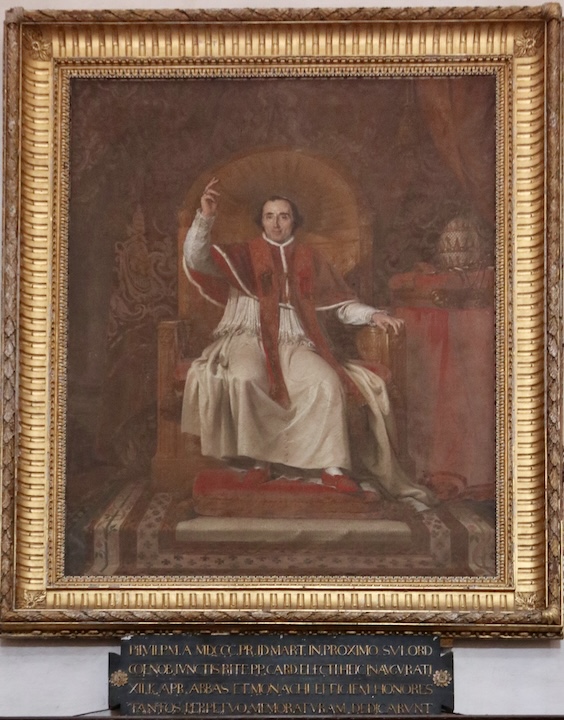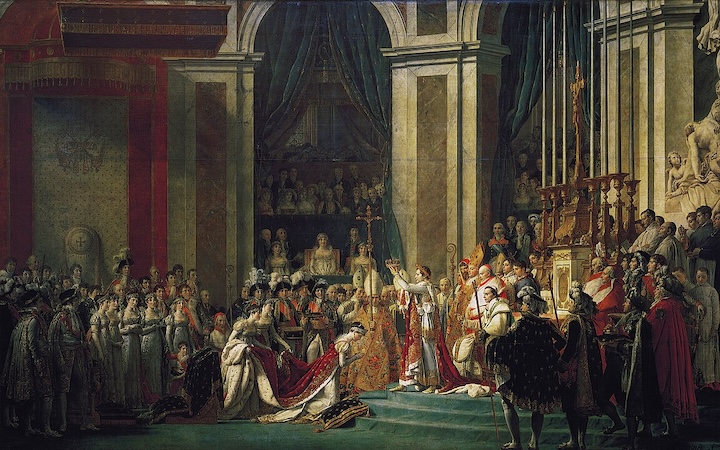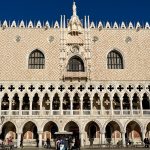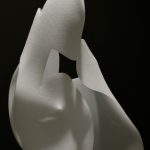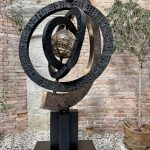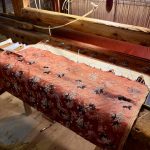In the year 1800 the Conclave to elect the new Pope was held in Venice, on the island of San Giorgio Maggiore. It was the last time a Conclave did not take place in the Sistine Chapel in Rome. What’s the story behind? How could a Conclave take place in Venice?
Venice and the Popes: a complicated relationship
Let’s start saying that, at the times of the Doges, Venice had certainly not kept a flawless relationship with the popes. In fact, it had always been very controversial! Venice always cherished its political independence and preferred not to lie under the control of the Papacy. This complicated relationship is quite evident in the art you can admire in Venice.
Art works related to Venice and the Papacy
The arrival of the holy relics of St Mark in the early 9th century had been welcomed by the State leader of Venice, Doge Partecipazio, who established St Mark’s body would be buried in the doge’s private chapel, “free from the bishop”. On the façade of St Mark’s church, it shows the Doge and not the clergy authorities taking care of the Evangelist Mark’s relics. Quite a pivotal event in the history of Venice.
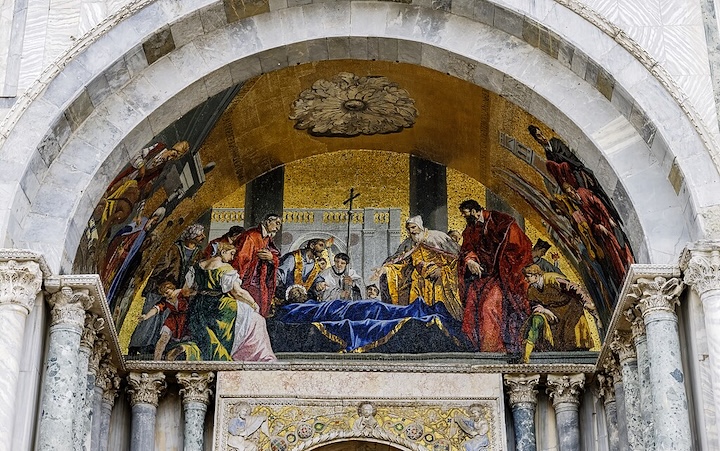
(Venice) St. Mark’s Basilica, Second lunette counting from left – Saint Mark’s body venerated by the doge by Sebastiano Ricci and Leopoldo Del Pozzo (1728)- Photo by Maria Schnitzmeier. Date: 2005-07-20
In the Doge’s palace, in the Collegio hall designed to welcome foreign ambassadors and State leaders, you will admire the central painting by Paolo Veronese. It reminds us that Venice would never forget Christian faith, which was considered indeed a principle of their Republic —which does not really mean Venice needs someone (like a Pope) to explain what religion is.
Paolo Sarpi and the Interdict against Venice
Moreover, among the relatively few statues in Venice, there is the one dedicated the the Servite theologian Paolo Sarpi. Sarpi is known as one of the most predominant figures who supported the Venetian State when Pope Paul V Borghese put Venice under the Interdict in 1606. He helped Venice force the Pope to lift the Interdict and a year later he became the target of an assassination attempt arranged by the Papacy. So now you know what kind of “heroes” the Venetians celebrated.
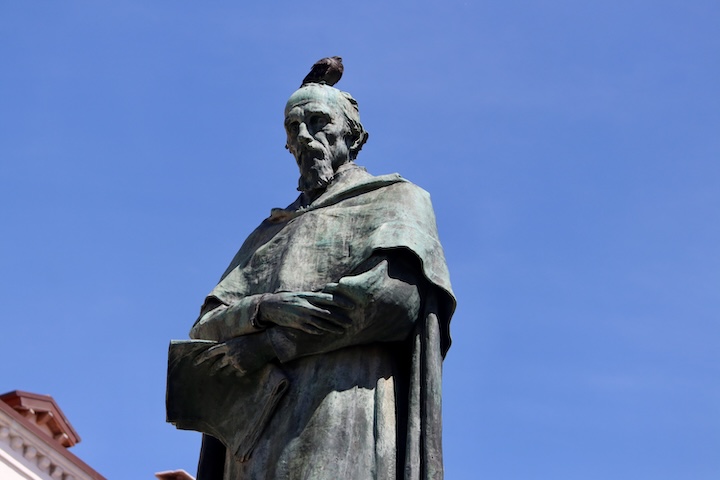
Bronze statue by Emilio Marsili representing Paolo Sarpi (and a pigeon) by campo Santa Fosca in Venice, 1892
Domenico Grimani and Julius II
Not to mention Pope Julius II Della Rovere who promoted the League of Cambrai in 1508 against Venice and almost brought to its political debacle, if it weren’t for the Venetian Cardinal Domenico Grimani intercession. Cardinal Domenico Grimani was a great diplomat, soothed Pope Julius II and convinced him to lift the excommunication and no longer move war against Venice.
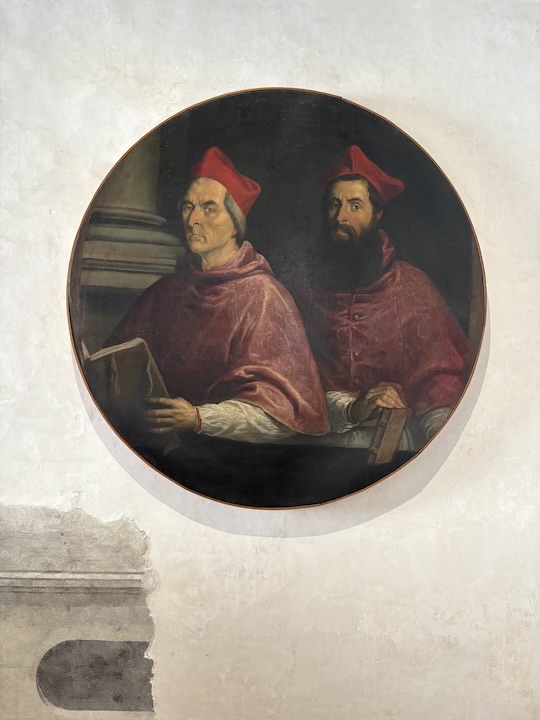
Portrait of Domenico (to the left) and Marino Grimani (to the right), Veneto Painter, replica from Palma Il Giovane, 16th century, Palazzo Grimani museum, Venice
Cardinal Domenico Grimani almost became pope himself, but failed twice. The first time was right after Julius II died. They say, he lost for two votes. The second time was when Leo X died. The reason why he didn’t get elected on this second chance was that in the meanwhile Antonio Grimani, Domenico’s father, had just become Doge. Never you would choose the son of a living Doge as the new pope. Something outrageous.
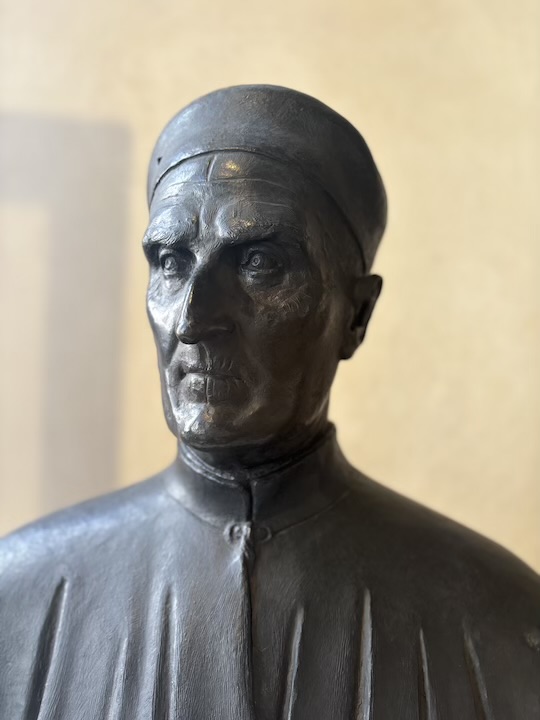
Briosco Andrea aka Riccio, Bronze bust of Antonio Grimani as Procuratore, Palazzo Grimani, Venice, 16th century
The historical context of the Conclave in Venice in 1800
So, it is really fascinating to imagine a conclave in Venice, and yet it happened. Not just, there is a lovely (anonymous) diary which was kept in those days recording what happened…
To begin with, it was not an easy time in Europe, not just for the Popes. Napoleon Bonaparte had deposed Pope VI and sent him in exile, passing by Parma, Turin, Susa and Briançon, Grenoble and finally in Valence where the pope died on August 29th in 1799. Around two years before, on October 17th 1797, in Campoformio, Bonaparte had handed the city of Venice to the Hapsburg empire, thus betraying the hopes of the Venetians after the fall of the Doge’s Republic in May 1797.
On October 7th in 1800 the decision was taken: the benedictine monastery on the island of San Giorgio Maggiore in Venice could be the right place for the conclave. The conclave officially started in December the 3rd 1799. Finally, after almost three and a half months, on March 14th the “habemus Papam” was announced. Gregorio Barnaba Chiaramonti, benedictine monk, bishop of Imola, chose the name of Pius VII.
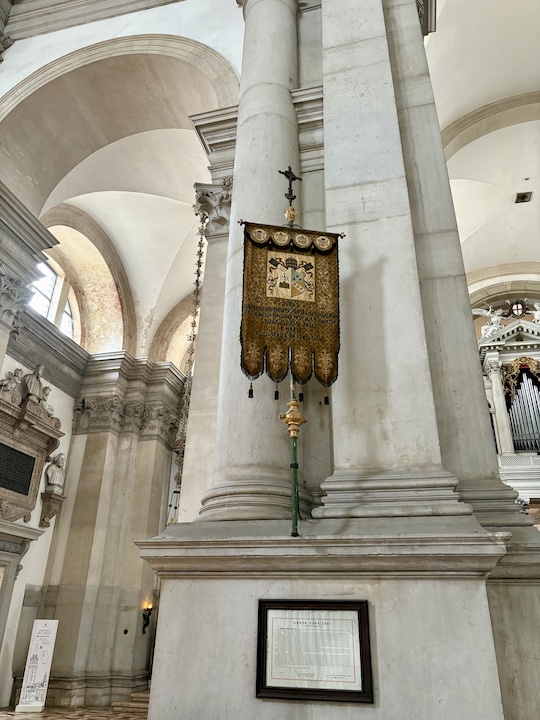
Interior of San Giorgio Maggiore Basilica featuring the crest of Pope Pious VII here elected in 1800, Venice
Many will remember, he is the Pope who supervised the coronation of Napoleon in 1805. Jacques-Louis David beautifully portrayed the scene as we can see in the Louvre museum. But that’s a different story.
A personal diary on the Conclave in Venice
Of course, the report of what happened in the room where cardinals voted is kept secret in the Vatican archives. However, someone living in the monastery in Venice left us a wonderful, personal diary of those days. The manuscript is Ms n. 1954 of the University library in Padua and consists of 26 sheets written recto and verso. It was transcribed by Father F.L. Maschietto and beautifully commented in year 2000, on the 200th anniversary of such a historical event.
I loved it. The diary was likely written by a benedictine monk in San Giorgio Maggiore. Gossip, opinions and rumors. What follows is my selection (with my words).
October 22nd
Everybody is discussing, and many, even if they know nothing, say there won’t be any conclave and if there will be, who knows when…
November 5th
Today a letter has arrived from Vienna: we need 44 rooms for the cardinals! Better choose them randomly, you never know what chaos there will be if one lets the cardinals choose room and neighbors themselves…
November 9th
Tutto in moto, gran tumulto, gran fracasso in tutte le parti del Monastero
Everything astir, great turmoil, huge noise in all the parts of the monastery, where two hundred workers move around incessantly… blacksmiths, masons, carpenters, upholsters, architects, painters…
November 10th
Cardinals control their rooms; some are happy, they got the rooms with a lagoon view! Others complain, there is no fireplace, the room is badly positioned; some are resigned.
December 3rd
The Conclave starts and the oration is so long that everybody says, if the oration is this long, how long will the Conclave be?!
While the threat of a European war approaches, still no Pope gets elected.
January 19th
We will stop giving food to the Cardinals, then they will certainly hurry up!
March 14th
We have a new Pope! The Pope shows himself by the window facing the square in front of the church of San Giorgio Maggiore. Everybody applauds, in the evening the whole city is illuminated, even the dome of the church of San Giorgio Maggiore. Orchestras play, people sing.
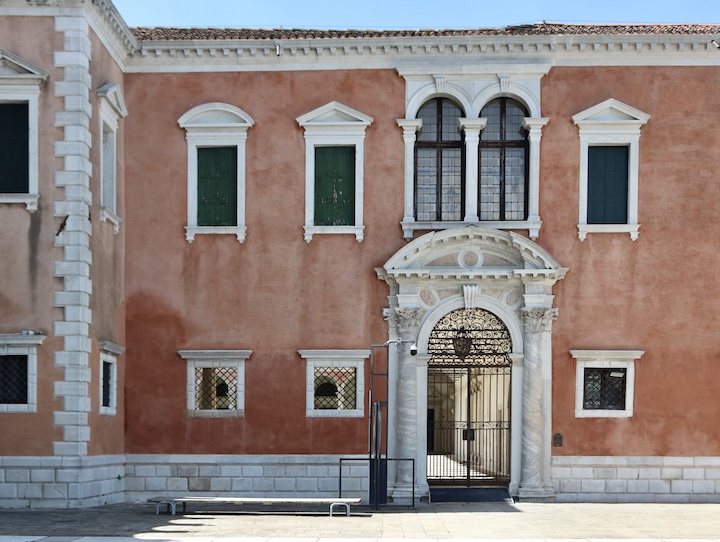
The entrance of the Benedictine Monastery at San Giorgio Maggiore island and the window where the newly elected Pope Pious VII likely greeted the Venetians
March 21st
The whole canal and St Mark’s basin is packed with boats of all kind, the bells toll and the whole city applauds. Even the Greek orthodox church of San Giorgio dei Greci celebrates with the bells of their leaning bell tower.
The way back to Rome
Pious VII decides to get back to Rome and on June 6th he reaches Lido at Malamocco. The ship is ready, only favorable wind is missing… till June 9th when, in the night, the wind arrives and he finally sails away from Venice, direction the port of Pesaro and eventually St Peter’s Basilica.
by Luisella Romeo
registered tourist guide in Venice, Italy
www.seevenice.it



